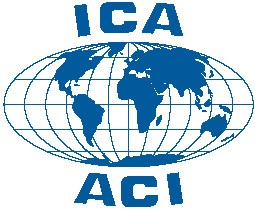|
|
InterCarto
- InterGIS 16 |
|
|
||
|
|
Interdisciplinary Seminar on GIS for Conservation of Nature and Cultural Heritage Rostov (Don), Russia, July 3-4, 2010 |
|
in Rostov Academician, Prof. Dr. Gennady Matishov www.isep.sfedu.ru www.ssc-ras.ru in Salzburg (co-operation with GI_Forum 2010) Prof. Dr. Josef Strobl www.gi-forum.org _______________________ Call for Papers Download _______________________ Prior to April 1, 2010 foreign participants should give the personal details for the Invitation Letters. In this case it would be easier to get a visa to Russian Federation. Abstracts submission 2010-04-15 Notification of acceprtance 2010-05-06 2010-07-02 Friday Arrival of the conference participants 2010-07-03 Saturday Conference 2010-07-04 Sunday Sectional meetings End of Plenary sessions 2010-07-05 Monday Sightseeing of the Don River and town of Starocherkassk Departure of the conference participants _______________________ Horst Kremers CODATA-Germany P.O. Box 20 05 48 D- 13515 Berlin Germany
|
|
|
|
|
||||
|
|
|
||||
|
|
Data bases must include characteristics, revealing unique and at the same time typical features of the object. Unique features demonstrate an outstanding, historical, scientific, sacral and art value of heritage objects, absence of their analogies. For example, places connected with life of famouse scientists, poets etc., some important events. Typical features represent principle mile stones of the epoch or regional development. Culture as an object of spatial studies has two aspects: culture in geographical space and geographical space in culture. Geographical space in culture is presented via virtual images presenting heritage objects among other. Virtual presentations of original cultural landscapes enables to reveal relic components which may comprise cultural heritage. They also are usful for historical reconstructions. GIS technologies are very helpful for virtual cultural landscapes constructions. National experiences of heritage studies are different. Exchange of original methods and ideas will promote the development of strategy for culture and nature landscape conservation. It will also benefit cross-cultural scientific communications in the field of human geography and GIS studies. Russian experiences in this field concerns theory of heritage conservation and cultural landscapes studies, including virtual cultural landscapes. Original maps have been compiled, including the map of cultural landscapes of Russia, virtual Saami cultural landscapes of the Hibiny mountains, “Geographical songs” map for the Pinega river etc. Methods for mapping of virtual etnic-cultural landscapes have been developed. Internet presentations of several nature heritage objects were prepared. GIS technologies were used for elaboration of public internet resource “Russian kurgans”, compiling of the data base “Cultural heritage of the Russian Arctic” etc.Unfortunately GIS practices are still far from humanitarian investigations in Russia. The planned seminar may be very helpful in this respect. This is of vital importance foe system studies of culture and nature heritage. |
|











